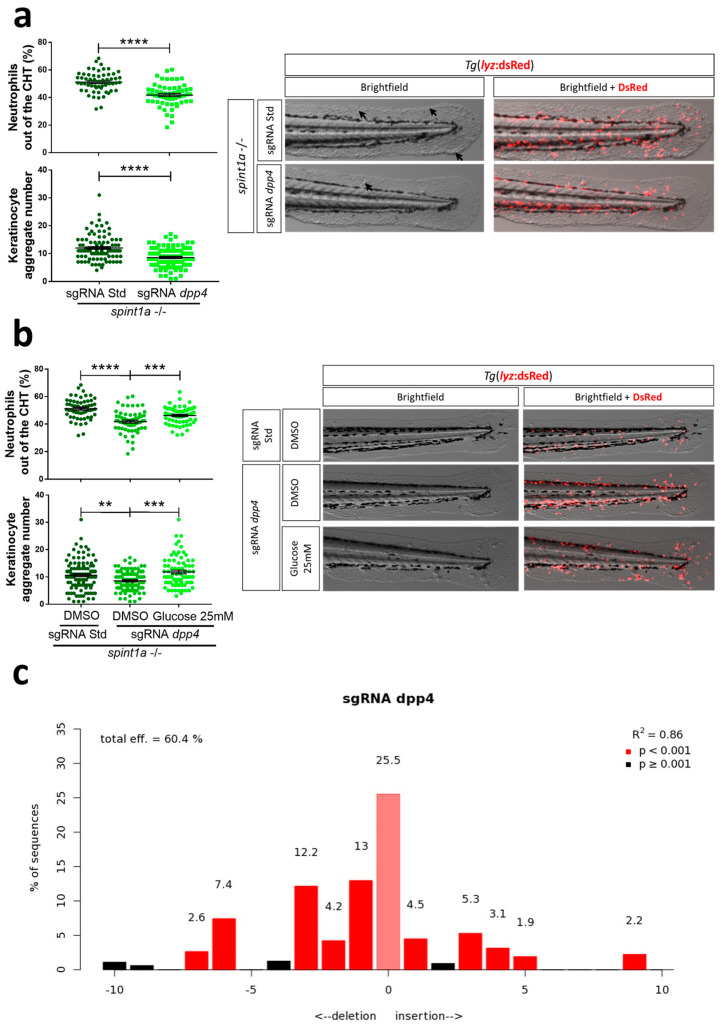Fig. 7
Impact of Dpp4 in zebrafish models of diabetic comorbidity in psoriasis. (a–c) Representative bright field and merge (bright field and red fluorescence) images and quantitation of skin neutrophil infiltration and the number of keratinocyte aggregates (arrows) in 3 dpf larvae after dpp4 genetic inhibition using CRISPR/Cas-9 technology in the presence of 25 mM glucose (b). (c) Analysis of genome editing efficiency in larvae injected with control or dpp4 crRNA/Cas-9 complexes and quantification rate of NHEJ-mediated repair showing all INDELs (https://tide.nki.nl/). Each dot represents one individual, and the mean ± SEM for each group is also shown. p-Values were calculated using 1-way ANOVA and Tukey multiple range test. ns, not significant, ** p ≤ 0.01, *** p ≤ 0.001, **** p ≤ 0.0001.

